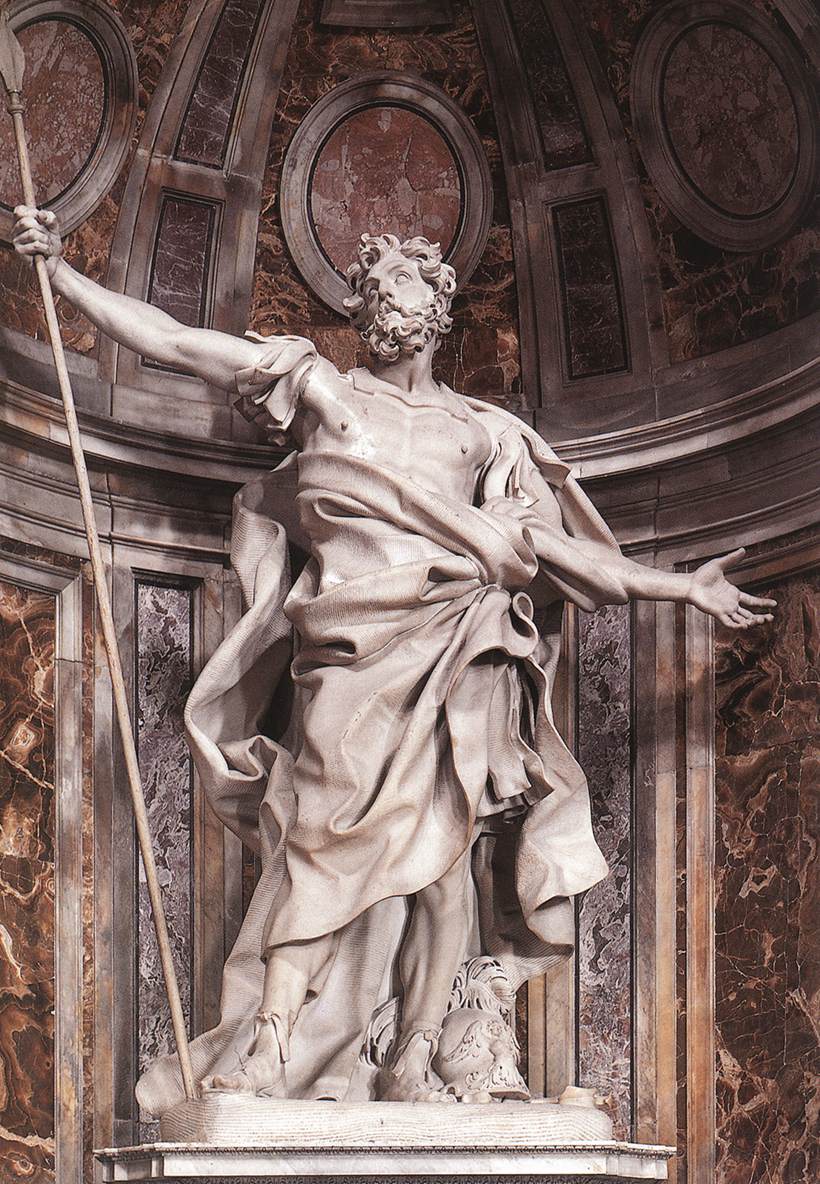
Saint Longinus
São Longuinho (Saint Longinus) lived in the first century, he was a contemporary of Jesus Christ and according to the very rare accounts as to the life of this saint, he is said to be the centurion that, in the Crucifixion, recognized Christ as "the son of God" (27:54 Matthew; Mark 15:39; Luke 23:47). This centurion is identified also as the soldier that "perforated Jesus with a spear" (John 19:34), probably for the fact of his name being derived from the Greek, meaning "a spear". It is told that the ones who were crucified had their feet broken in order to ease the removal from the cross, but when it was Jesus' turn, he already had his feet free, and so, instead of breaking his feet, one of the soldiers perforated the side of his body with a spear. The water that came from Jesus' wound would have splashed into his eyes, curing him instantly of a serious illness in his eyes. Consequently, the soldier was converted and, upon abandoning for ever the army and his dwelling, became a monk traveling through to Caesarea and Cappadocia, actual Turkey. The tradition tells us that Saint Longinus destroyed some images idolized in the time with an axe, in the presence of a man that pursued him, and that from the broken images came out many malignant spirits that possessed and blinded such man. Longinus told him that he would only be cured and liberated after his conversion. So, after making a prayer, the man was immediately healed of the blindness and converted himself to Christianity. Saint Longinus was imprisoned and tortured because of his Christian faith, having his teeth pulled out and his tongue cut. Usually invoked for finding lost objects, in East Europe his party is celebrated on the 16th of October. In Brazil and Spain, the celebration occurs on the 15th of March. In the liturgical art, Saint Longinus is represented as a soldier with a spear aimed at his eyes or with open arms, holding a spear. The spear of Saint Longinus finds-itself today in Vienna, Austria, and is much respected as a religious relic.
